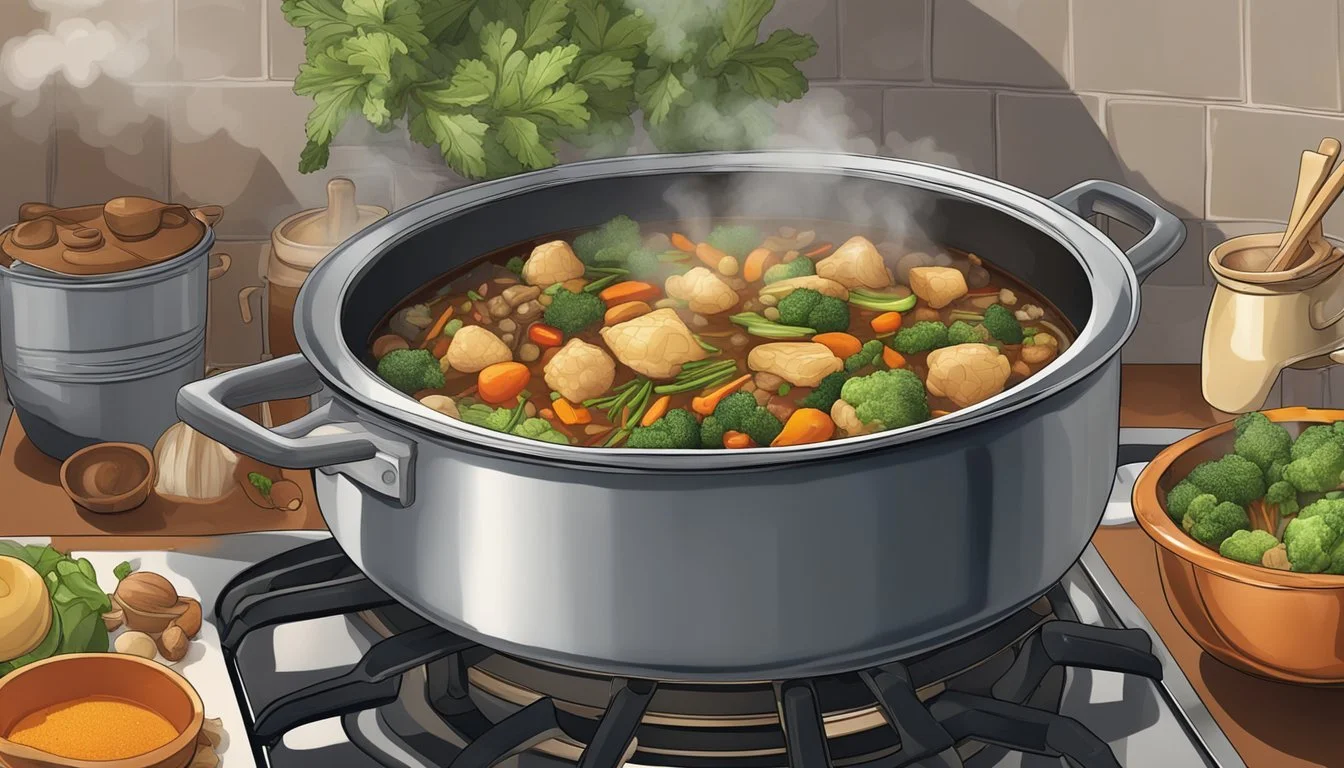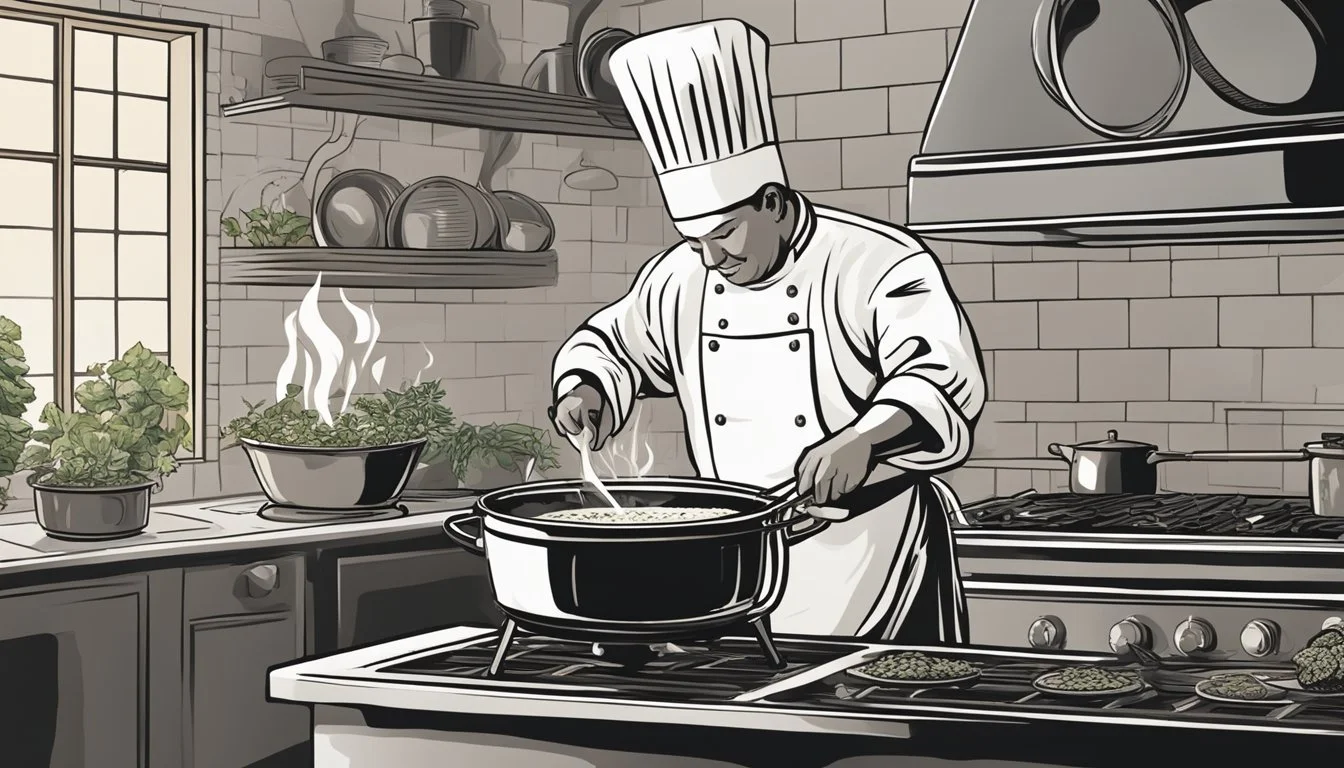Turtle Soup Unveiling a Culinary Tradition from Chinese and Creole Cultures
Turtle soup, a culinary tradition steeped in history, remains a highly regarded dish across various cultures. In both Chinese and Creole cuisines, this dish is synonymous with luxury and complex flavors. In Chinese cuisine, turtle soup is often praised not only for its taste but also for its medicinal properties, believed to offer nutritional benefits. The soup typically contains turtle meat and is enhanced with ingredients like goji berries and ginger, embodying a harmonious blend of rich flavors and cultural heritage.
Creole cuisine, particularly in the southern United States, has its own distinctive version of turtle soup, marked by its savory and hearty character. This Creole delicacy often features a base of slowly simmered turtle meat, building layers of flavor with ingredients such as onions, garlic, bay leaves, and a dark roux. Both cuisines regard turtle soup as a dish to be savored on special occasions, reflecting the intricate preparation and the reverence for the traditional recipes passed down through generations.
History and Culinary Significance
Turtle soup has a rich heritage within various cultures, particularly within Chinese and Creole cuisines. Both traditions emphasize turtle meat as a key ingredient, making the dish a unique culinary artifact.
Origin of Turtle Soup in Different Cultures
Chinese Cuisine: In Asia, particularly in Chinese culture, turtle soup is respected both for its taste and medicinal properties. The soup often incorporates herbs and is perceived to offer health benefits according to traditional Chinese medicine. Turtle meat is used for its supposed nutritional value, and the dish is served in various festivals and banquets, signifying affluence and prosperity.
Creole Cuisine: In New Orleans, a city world-renowned for its Creole cuisine, turtle soup is a quintessential dish. Here, it gained popularity as a part of the elaborate Oyster Suppers in the mid-1800s. The Creole version typically includes a roux-base, seasoned with ingredients like tomatoes, lemon juice, sherry, and a mix of Creole spices.
Turtle Soup in Modern Cuisine
United States: In the United States, gourmet food movements and regional specialties have embraced turtle soup, often linking it to the South, especially Louisiana. However, ethical considerations over turtle conservation have led to the creation of mock turtle soups using alternative meats.
Lent and Turtle Meat: Turtle meat has historically been a valuable source of protein during Lent, a period when many Christians abstain from eating warm-blooded animals. This practice contributed to turtle soup's prominence, as it became a suitable alternative during the Lenten season.
Utilizing both regional techniques and flavors, turtle soup stands as a testament to the adaptability and resilience of culinary traditions, even as societal values and ethical considerations around food evolve.
Types of Turtle Soup
Turtle soup has a rich heritage, with numerous variations rooted in different cultural cuisines. Each type showcases distinct ingredients and preparation methods, reflecting its region of origin.
Creole Turtle Soup
Creole Turtle Soup is a traditional dish in Louisiana, combining varied cultural influences such as West African, French, Spanish, and Native American. Key ingredients include turtle meat, typically from snapping turtles, seasoned with Creole spices. It's often complemented with various aromatic vegetables and served with a hard-boiled egg, adding depth to its already complex flavor profile.
Terrapin Soup
Terrapin Soup, also known to some as turtle soup, was once a prevalent delicacy in the United States and parts of Asia such as China, Taiwan, and Singapore. This dish primarily utilizes the meat of small, edible turtles—terrapins. Ingredients can vary, but the soup usually sees the tender meat simmered with select herbs and spices, serving as a luxurious offering in many cultures.
Snapper Soup
Snapper Soup often refers to a type of turtle soup made from the meat of snapping turtles in the United States. It is a hearty stew, heartily seasoned, and thickened with a roux for a rich consistency. It's a classic example of traditional Americana cuisine, particularly in regions like Philadelphia, where it is commonly found on menus at local dining establishments.
Basic Ingredients and Alternatives
This section is devoted to outlining the core components and possible substitutions that can be utilized to create turtle soup, a dish deeply rooted in Chinese and Creole culinary traditions.
Turtle Meat and Substitutes
Turtle meat, known for its distinctive flavor, is the staple ingredient in both Chinese and Creole turtle soup recipes. Substitutes, such as alligator or beef, may be used if turtle meat is unavailable, or for ethical and conservational reasons. It is imperative to cook these proteins thoroughly to achieve the desired texture and flavor profile similar to that of traditional turtle meat.
Traditional Vegetables and Herbs
Essential vegetables like onion, celery, and tomato form the classic mirepoix that provides a flavor base for the soup. Other customary vegetables include root vegetables that increase the heartiness of the dish. Aromatic herbs such as thyme and bay leaves infuse the broth with traditional flavors, while parsley offers a fresh garnish to the dish.
Flavor Enhancers and Seasonings
To achieve the rich and complex flavor characteristic of turtle soup, a variety of seasonings are employed. Butter is used for its richness, while flour acts as a thickening agent. Spices such as black pepper, cayenne, and both sweet and hot paprika add depth and a subtle heat. For those aiming to replicate Creole flavors, seafood stock can be incorporated to enhance the soup’s savory notes.
Preparing the Soup Base
The foundation of any turtle soup relies on its robust base, primarily composed of a rich turtle stock and thickened with a savory roux. Precision in crafting these elements is essential for an authentic flavor.
Making Turtle Stock
For the turtle stock, a meticulous process is adhered to. It begins by boiling water and then adding turtle meat to it. Ensuring impurities are removed, the foam is skimmed off the surface. This initial boil is crucial for a clear broth. Aromatic ingredients like onions and bay leaves are added, along with cayenne pepper and salt for seasoning. This blend is simmered gently, transforming the water into a flavorful stock. Ideally, the meat should reach a point of tenderness, which may take a couple of hours. The stock represents the heart of the soup, imbuing it with deep flavors and setting the stage for additional ingredients.
Roux as a Thickening Agent
A roux acts as the thickening agent for turtle soup, providing texture and richness. To create a roux, equal parts of all-purpose flour and unsalted butter are cooked together until they form a paste. The cooking duration can vary depending on the desired color and flavor; a dark roux adds a nutty taste ideal for turtle soup. Once prepared, the roux is integrated into the turtle stock, thickening the broth into a velvety consistency, and it's important to stir constantly to prevent lumps. The resulting base is now ready for the infusion of turtle meat and other complementary ingredients that complete the soup.
Cooking Techniques
In the preparation of Turtle Soup, the cooking techniques applied are pivotal, not only to tenderize the turtle meat but also to meld complex flavors to perfection.
Mastering the Stew
The heart of Turtle Soup lies in its stewing process. It typically commences with submerging the turtle meat in water within a soup pot or a Dutch oven. They bring the pot to a boil and carefully remove any impurities that rise to the surface. After skimming, they lower the heat, allowing the meat to simmer gently over several hours; this slow cooking method ensures the meat is fall-off-the-bone tender and infuses the stew with a rich base flavor.
Enhancing Flavors with Sautéing and Roasting
Beyond stewing, enhancing the soup's flavor profile involves key techniques such as sautéing and roasting. Cooks often begin by browning the meat in batches to ensure it develops a deep, caramelized crust. They perform this either in a soup pot with a mixture of butter and oil or in a Dutch oven. Sautéing the turtle meat with aromatics like onions and a blend of spices further locks in a savory depth. This essential step forms the foundation for a complex and robust gravy, elevating the final soup to a level of unmistakable richness.
Finishing Touches
After the soup has simmered and the flavors are blended, the final steps are crucial for perfecting the dish's taste and visual appeal.
Seasoning and Spice Adjustment
In both Chinese and Creole versions of turtle soup, achieving the right balance of flavors is paramount. Cooks often fine-tune the seasoning just before serving to cater to individual palates. A dash of Worcestershire sauce or a sprinkle of cayenne pepper can enhance the soup's complexity. For those preferring a more aromatic profile, a pinch of oregano might be added. It's also common to adjust the saltiness with either salt or a splash of dry sherry, depending on the variant of the recipe. In Creole cuisine, the heat is often adjusted with pepper sauce, whereas a hint of lemon juice lends a refreshing note to complement the rich flavors.
Garnishing and Presentation
Garnishes are not just for decoration; they also contribute to the flavor and texture of the turtle soup. Traditional Creole turtle soup is often finished with a spoonful of chopped hard-boiled egg, enhancing its texture and richness. Additionally, a twist of lemon zest can add fragrance and a burst of citrus to brighten the dish. For a more sophisticated touch, sherry is sometimes offered at the table to be stirred in as per individual taste.
In a Chinese context, spinach leaves may be used for a pop of color and a contrasting fresh taste, while finely sliced red bell peppers or green onions add both color and a subtle crunch. Both cuisines might include a final sprinkling of thinly sliced red onions or tomato puree, offering visual appeal and a burst of flavor.
Presentation is key; whether in a fine porcelain bowl or a simple, rustic crock, the soup should be served hot and aromatic, inviting diners to sample this time-honored delicacy.
Serving Turtle Soup
Turtle soup is a revered dish that offers a nuanced flavor, often enjoyed in Chinese and Creole cuisines. The way it's served can enhance its taste and pay homage to its rich cultural heritage.
Accompaniments and Beverage Pairings
When serving turtle soup, it is customary to consider the balance of flavors and textures. The soup pairs well with a range of accompaniments:
Bread: Crusty bread, such as a baguette or sourdough, is a classic choice, providing a textural contrast and a means to soak up the flavorful broth.
Rice: A serving of white rice can act as a mild base to support the complex flavors of the turtle meat while contributing to the heartiness of the meal.
Vegetables: Traditionally, root vegetables or a simple green salad may be served alongside to add freshness and cut through the richness of the soup.
Beverage pairings play a significant role in complementing the distinctive taste of turtle soup:
White Wine: Recommendation - A crisp, dry white wine like a Sauvignon Blanc or Chardonnay pairs well with the soup, balancing its savory notes.
Tea: Recommendation - Oolong or jasmine tea can cleanse the palate and bring a lightness to the dining experience.
Water: Recommendation - Sparkling or still water is essential to stay neutral and let the soup's flavors shine.
Soup as a Starter or Main Dish
Turtle soup can be served in various capacities, each affecting how it's presented and portioned:
As a Starter: A smaller portion is served, often focusing on highlighting the delicate taste of the turtle meat without overwhelming the palate. This allows diners to appreciate the appetizer before progressing to more substantial courses.
As a Main Dish: A generous portion is served, ensuring it is the centerpiece of the meal. Often, when turtle soup is the main course, additional components like rice or bread become more prominent to transform the soup into a filling entree.
Ethical and Environmental Considerations
Turtle soup has roots in various cultures, including Chinese and Creole cuisines. However, its impact on populations of turtle species and local ecosystems cannot be overlooked.
Sustainable Fishing and Hunting
When it comes to turtle soup, sustainable fishing and hunting practices are crucial. Overfishing and hunting of turtles can lead to population declines, and in some cases, push species towards endangerment. In Louisiana, for example, traditions of hunting turtles for soup have had to adapt to support long-term turtle population health. It is essential to adhere to established fishing quotas and to use methods that do not cause unnecessary harm to turtle populations or their habitats.
Legal and Conservation Status
The legal and conservation status of turtles varies by region and species. Many turtles are protected under various environmental laws and treaties, aimed at balancing human consumption with ecological well-being. Enforcement of these laws is vital to protect turtles from illegal fishing and hunting pressures. For instance, certain turtle species in Louisiana may be subject to legal protections, ensuring that any hunting or fishing activities do not lead to significant ecological disruption.
In review, while the tradition of turtle soup continues, it must be supported by ethical and sustainable practices that ensure the survival and well-being of turtle populations and the environments in which they live.
Recreating Turtle Soup at Home
Preparing Turtle Soup at home can offer a taste of traditional Chinese and Creole cuisines. With the right ingredients and a clear cooking guide, any chef can recreate this renowned dish, bringing the rich flavors and unique textures to their own kitchen.
Finding Ingredients
For chefs looking to prepare Turtle Soup, sourcing the correct ingredients is crucial. One should seek out:
Fresh turtle meat: often available at specialty food markets or through online suppliers.
Aromatic spices: such as ginger, bay leaves, and cayenne for seasoning.
Additional components: hard-boiled eggs and garlic, which add depth and sophistication to the flavor profile.
Accompaniments: peanut butter, often used in Creole versions to thicken the soup and add a unique taste.
Here is a table of ingredients commonly used in Turtle Soup:
Turtle meat: 1 lb; Notes: Cleaned and cubed
Ginger: 1 piece; Notes: Fresh; can substitute with ginger powder
Bay leaves: 2 leaves; Notes: Provides aromatic flavor
Cayenne pepper: to taste; Notes: Adds a spicy kick
Hard-boiled eggs: 2-3; Notes: Sliced or chopped
Garlic: 2 cloves; Notes: Minced
Peanut butter: 2 tbsp (optional); Notes: Used in some Creole recipes
Keep in mind that in some locations, consuming turtle meat is subject to regulations, so always check local laws before purchasing.
Step-by-Step Cooking Guide
Here is a concise guide to the cooking process:
Boil the Meat: Place turtle meat in a pot of boiling water with aromatics like bay leaves and ginger. Boil for 20-30 minutes or until tender, then drain and set aside.
Prepare a Roux (if making a Creole-style soup): In a separate pan, cook flour and oil together until a blonde roux is achieved. This will serve as a thickener for the soup.
Sauté Aromatics: In a clean pot, sauté minced garlic and additional spices like cayenne to bring out their flavors, being careful not to burn them.
Simmer the Soup: Return the turtle meat to the pot, add enough fresh water to cover the meat, then bring to a boil. Reduce to a simmer, add sliced hard-boiled eggs, and continue to cook on medium heat.
Final Adjustments: Depending on the recipe, peanut butter may be added to thicken the soup. Cook until all ingredients are well incorporated and the soup reaches the desired consistency.
Serve and Enjoy: Once the flavors are melded and the meat tender, ladle the soup into bowls. Turtle Soup is often served with a dash of sherry on top, a common practice in New Orleans menus.
This process can be adapted depending on the specific type of Turtle Soup you aim to recreate, be it Chinese or Creole. Each step requires attention to detail to ensure that the flavors are balanced and the textures are enjoyable.








